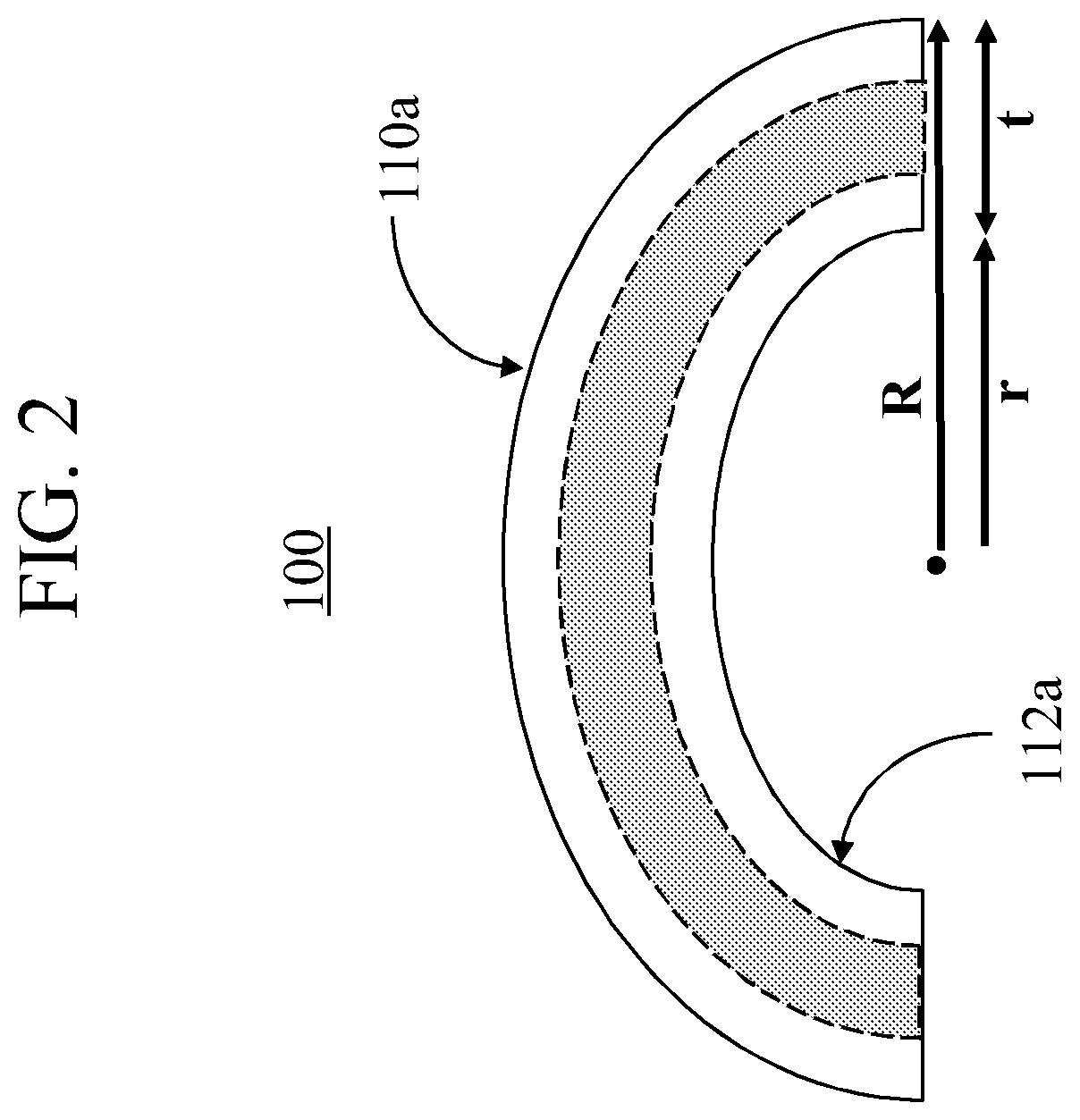Glass compositions that enable high compressive stress
a composition and compressive stress technology, applied in the field of compositions, can solve the problems of glass bending failure and contain surface flaws
- Summary
- Abstract
- Description
- Claims
- Application Information
AI Technical Summary
Benefits of technology
Problems solved by technology
Method used
Image
Examples
example 1
[0089]Glass samples having a composition (Example 29 in Tables 1-3) and physical properties described in the present disclosure were ion exchanged in three separate molten salt baths: one ion exchange bath containing 100 wt % KNO3 (Table 4a); a second ion exchange bath containing 50 wt % KNO3 and 50 wt % NaNO3 (Table 4b); and a third bath containing 75 wt % KNO3 and 25 wt % NaNO3 (Table 4b). Results of these ion exchange experiments in on 1 mm thick glass samples are listed in Tables 4a-4c. The results obtained when samples were ion exchanged in the mixed KNO3 / NaNO3 baths demonstrate the ability to ion exchange the lithium-containing glasses described herein to attain DOL's in line with the other examples, but much deeper DOCs. For example, the Table 4a examples had DOLs and DOCs (wherein DOC is substantially the same as the DOL for these cases because only KNO3 was used in the molten salt bath) on the order of about 4 μm to about 15 On the other hand when samples were ion exchanged...
example 2
[0090]Samples having a 100 μm thickness and the composition of Example 29 listed in Table 1 were ion exchanged at 410° C. for 6 hours in a molten salt bath comprising 100 wt % KNO3 and the compressive stress before and after light etching are shown in Table 5. GORILLA GLASS 2® samples (composition: 70 mol % SiO2, 10 mol % Al2O3, 15 mol % Na2O, and 5 mol % MgO) having thicknesses of 100 μm, 75 μm, and 50 μm were ion exchanged at 410° C. for 1 hour in a molten salt bath comprising 100 wt % KNO3 and the compressive stress before and after light etching are shown in Table 5.
[0091]In some cases, light etching is applied to samples following ion exchange in order to remove process-induced damage. The light etch comprises an acid which includes fluoride-containing aqueous treating media containing at least one active glass etching compounds elected from the group consisting of HF, combinations of HF with one or more of HCL, H2NO3, and H2SO4, ammonium bifluoride, sodium bifluoride, and the ...
example 3
[0093]The tightly packed network within the glasses described herein enables high compressive stress to be achieved. Compressive stress at various depths into the glass thickness from the surface are shown in FIG. 3 for 1 mm thick samples of GORILLA GLASS 2® (square data points) and one of the glasses described herein (Example 29 in Tables 1-3, diamond data points) following ion exchange for 1, 2, 3, 4, 5, 6, 8, and 16 hours in a molten salt bath at 410° C. comprising about 100% KNO3 by weight. For example, point 302 was for the sample of Example 29 glass exchanged for 6 hours and which achieved a peak CS of 1291 and a DOL of 15.3 microns, whereas point 304 was for the sample of GORILLA GLASS 2® exchanged for 1 hour and which achieved a peak CS of 988 and a DOL of 15.8 μm. Thus, for the same DOL of approximately 15 μm, the glasses having the Example 29 composition exhibit peak compressive stresses that are 300 or more MPa greater than those observed for the GORILLA GLASS 2® samples....
PUM
| Property | Measurement | Unit |
|---|---|---|
| thickness | aaaaa | aaaaa |
| thickness | aaaaa | aaaaa |
| peak compressive stress | aaaaa | aaaaa |
Abstract
Description
Claims
Application Information
 Login to View More
Login to View More - R&D
- Intellectual Property
- Life Sciences
- Materials
- Tech Scout
- Unparalleled Data Quality
- Higher Quality Content
- 60% Fewer Hallucinations
Browse by: Latest US Patents, China's latest patents, Technical Efficacy Thesaurus, Application Domain, Technology Topic, Popular Technical Reports.
© 2025 PatSnap. All rights reserved.Legal|Privacy policy|Modern Slavery Act Transparency Statement|Sitemap|About US| Contact US: help@patsnap.com



